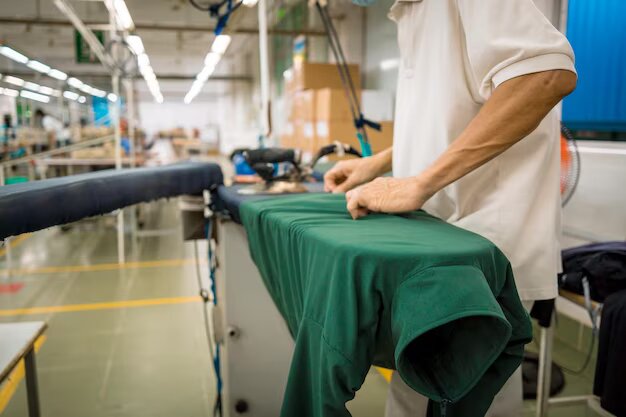Showcasing Innovations in Sustainable Fashion

In recent years, sustainable fashion has emerged as a powerful force reshaping the apparel industry. With growing awareness of environmental and ethical concerns, consumers and fashion brands alike are increasingly embracing eco-conscious practices. This blog explores the innovations and trends driving sustainable fashion forward. We’ll delve into the importance of sustainable fashion, examine materials, production techniques, and showcase brands leading the way. Additionally, we’ll discuss how consumers can contribute to this movement and take a glimpse into the future of sustainable fashion.
Table of Contents
Sustainable Fashion: A Paradigm Shift
Sustainable fashion represents a paradigm shift in the industry. It’s not merely a trend; it’s a necessity. The fashion industry has long been associated with excessive waste, pollution, and unethical labor practices. Here’s why sustainable fashion matters:
Environmental Impact: The fashion industry is a significant contributor to pollution and waste. Sustainable fashion seeks to minimize these impacts through eco-friendly practices.
Ethical Production: Many conventional fashion brands rely on cheap labor in poor working conditions. Sustainable fashion prioritizes fair wages and safe working conditions for garment workers.
Resource Conservation: With finite resources, the fashion industry must adopt sustainable materials and production methods to reduce its impact on the planet.


Sustainable Materials and Fabrics
Recycled Materials: Recycled materials are at the forefront of sustainable fashion. Innovations in recycling technology have made it possible to transform waste into fashionable garments. From recycled plastic bottles turned into activewear to upcycled denim, these materials reduce the need for new resources.
Organic Cotton: Conventional cotton farming is resource-intensive and relies on pesticides. Organic cotton is grown without harmful chemicals, reducing environmental damage and promoting soil health.
Hemp and Bamboo: Hemp and bamboo are sustainable alternatives to traditional textiles. They require fewer resources and are naturally pest-resistant, reducing the need for pesticides.
Sustainable Production Techniques
Slow Fashion vs. Fast Fashion
Slow fashion advocates for producing high-quality, long-lasting garments, promoting mindful consumption. In contrast, fast fashion prioritizes mass production and low prices, often at the expense of quality and ethics.
Ethical Manufacturing
Ethical manufacturing ensures fair wages, safe working conditions, and workers’ rights. Brands adopting ethical practices contribute to a more just fashion industry.
Zero Waste Design
Zero-waste design minimizes fabric waste during production. Designers create patterns that utilize fabric efficiently, reducing the environmental footprint.

Innovations in Sustainable Fashion
Sustainable Dyes and Printing: Innovations in dyeing and printing techniques have led to the development of sustainable dyes and inks that minimize water usage and chemical waste.
Circular Fashion Models: Circular fashion models promote a closed-loop system. Clothes are designed for longevity and can be reused, repaired, or recycled, reducing the demand for new production.
Upcycling and Repurposing: Upcycling transforms discarded materials into new fashion items, offering unique and creative designs. Repurposing breathes new life into old garments.
Eco-Friendly Packaging: Sustainable fashion brands are adopting eco-friendly packaging, reducing plastic waste and promoting recyclability.


Sustainable Fashion Brands Leading the Way
Case Studies: Explore real-world examples of sustainable fashion brands that prioritize environmental and social responsibility. Discover how these brands integrate sustainability into their core values.
Consumer Tips for Sustainable Fashion
How to Make Informed Choices: Learn how consumers can make informed choices when shopping for clothing. Consider factors like material, production methods, and brand ethics.
Wardrobe Sustainability: Sustainable fashion extends beyond buying new items. Discover strategies for maintaining a sustainable wardrobe, including clothing care and repair.
Thrifting and Secondhand Shopping: Thrifting and secondhand shopping are eco-friendly ways to find unique fashion items while reducing demand for new production.
The Future of Sustainable Fashion
Technological Advancements: Explore how technology continues to drive innovation in sustainable fashion, from 3D printing of clothing to advancements in sustainable materials.
Sustainability in High Fashion: High-end fashion brands are increasingly embracing sustainability, proving that style and sustainability can coexist.
sustainable fashion is not just a trend; it’s a transformative movement in the fashion industry. Brands, consumers, and innovators are working together to reduce the industry’s environmental impact and promote ethical practices. By adopting sustainable materials, production techniques, and consumption habits, we can shape a future where fashion is both stylish and responsible.
FAQ Section
Q1: What is sustainable fashion, and why is it important?
- A1: Sustainable fashion focuses on reducing the environmental and social impact of the fashion industry. It’s important because it helps protect the planet, promotes ethical practices, and ensures a better future for the industry.
Q2: How can recycled materials be used in fashion?
- A2: Recycled materials, such as plastic bottles or old textiles, can be transformed into new clothing items, reducing waste and conserving resources.
Q3: What are some examples of sustainable production techniques?
- A3: Sustainable production includes practices like slow fashion (producing quality, long-lasting items), ethical manufacturing (fair wages and safe working conditions), and zero-waste design (minimizing fabric waste).
Q4: What are circular fashion models?
- A4: Circular fashion models aim to create a closed-loop system where clothes are reused, repaired, or recycled, reducing the need for new production and waste.
Q5: How can consumers contribute to sustainable fashion?
- A5: Consumers can make a difference by choosing eco-friendly brands, buying quality items that last, and participating in clothing swaps or secondhand shopping.
Q6: What is the role of technology in the future of sustainable fashion?
- A6: Technology plays a significant role in developing sustainable materials, improving supply chain transparency, and enabling innovations like 3D printing for clothing.
Q7: Are sustainable fashion items more expensive?
- A7: While some sustainable fashion items may have a higher initial cost, they often offer better value in the long run due to their durability and ethical production practices.
Q8: Can sustainable fashion be stylish and trendy?
- A8: Absolutely! Many sustainable fashion brands prioritize style and design, proving that eco-conscious choices can be fashionable.
Q9: How can I start building a sustainable wardrobe?
- A9: Begin by assessing your current wardrobe, choosing versatile pieces, and gradually incorporating sustainable items. Thrifting and clothing swaps are great ways to start.
Q10: What is the ultimate goal of sustainable fashion in the fashion industry?
- A10: The ultimate goal is to transform the fashion industry into a responsible and sustainable one, where fashion is kind to the planet and the people who make it.
